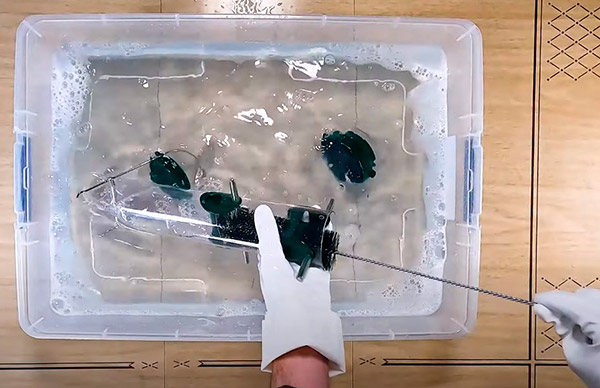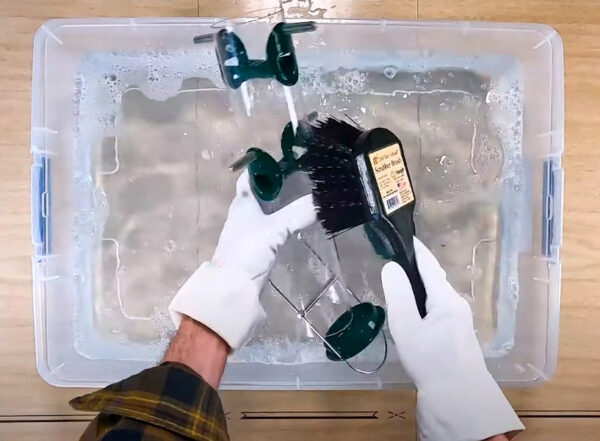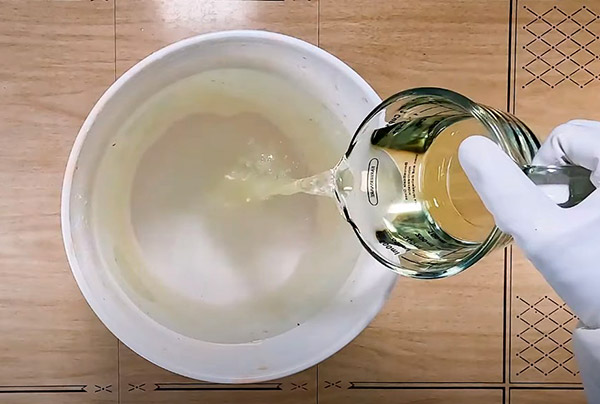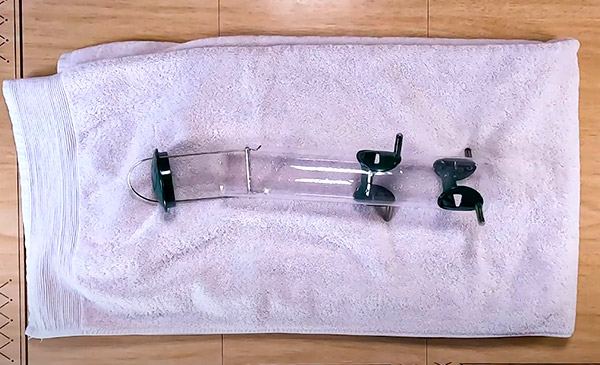Bird feeders attract an extensive range of birds to your yard or garden, most of which carry diseases or bacteria that could spread among other feathered creatures. Unfortunately, diseases such as Mycoplasmosis, Avian pox, bird flu, salmonellosis, avian tuberculosis, and Chlamydiosis can be disseminated from diverse birds landing on your feeders.
Regularly cleaning and sanitizing your feeders can prevent these conditions from worsening. But is there a unique technique about “how to clean a tube bird feeder?” Correct cleaning supplies, formulating bleach solution, thoroughly cleaning and rinsing, and drying the feeder before refilling it can save you from trouble.
Explore the step-by-step cleaning techniques in the post below to keep your tube feeder germ-free and in good shape for your feathered friends.
Contents
Preparation of Cleaning Supplies
The materials to prepare when cleaning the tube bird feeder include the following:
- Container or tub
- Scrubber or tube feeder brush
- Gloves
- Clean towel, rag, or cloth
- Regular bleach (the ones you use at home)
- Dish soap
- Measuring cup
Step-by-Step Cleaning Procedures
Bleach solution is deemed the most effective method to dramatically remove germs, bacteria, and mold in bird feeders. Similarly, this cleaning technique helps achieve the desired result in dealing with deep-seated dirt and residues in feeders.
Here are the cleaning instructions to get started:
Step 1: Detach the tube feeder and remove the bird food residues stuck there.
Step 2: Fill the tub with some water and dish soap.
Step 3: Using a scrubber or feeder brush, scrub the tube feeder intensively to eliminate deep-seated dirt and food debris.
Step 4: Afterward, wash all the components of the tube feeder carefully, ensuring no residue is left.

Step 6: Soak the tube feeder in the solution for about ten minutes. Keep rotating the feeder, and ensure you submerge all its components in the bleach solution.
Step 7. Remove the feeder from the bleach solution and wash it carefully.
Step 8: In a clean towel, rag, or cloth, set the tube feeder out and let it dry entirely before refilling.
Your tube bird feeder is now ready to use, free of dirt and other residues, making it all set to feed your winged guests again safely! Sure thing, keeping bird feeders dirt-free is a valuable component of their maintenance. Once you start bird feeding, you must keep it unstained and sanitized regularly. Make it a habit to clean the feeder every few weeks or more often if necessary.
How to “DEEP CLEAN” bird tube feeders?
Like the cleaning methods mentioned above, use dish soap and water first, then follow up with a bleach solution. The only slight difference in deep cleaning is initially using mild dish soap and hot water to remove the deep dirt buildup in the feeder.
As you might have observed, bird seeds can get trapped surrounding the feeder’s bottom or above portion. Luckily, profoundly cleaning the crevices is a cinch with a feeder or scrubber brush.
The best option for tube feeders is a scrub brush with a long handle, as it effectively cleans difficult-to-reach areas. Then, soak the tube feeder in a regular household bleach solution, following the above-mentioned measures.
An Important Reminder
Did you know that leftover seeds and other bird food scattered on the ground can cause more harm and encourage disease dissemination than you can imagine?
That said, aside from cleaning bird feeders, we recommend raking underneath the bird feeder to eliminate uneaten bird food and empty hulls.
Besides, if you leave these food residues for long-term, they can lure more undesirable guests, such as irking bugs, squirrels, etc., searching for food.
Raking beneath the bird feeder makes your feeding station a healthier and danger-free spot for multiple birds.
Frequently Asked Questions – FAQs
Why is it necessary to wear gloves when cleaning tube bird feeders?
Since bird feeders are placed outside, frequented, and exposed to diverse types of wild animals, wearing gloves when cleaning them keeps you safe from contracting diseases.
Feeders are one of the favorite breeding grounds of germs and bacteria, so wearing safety gear when dealing with them is vital.
Various diseases that affect different bird species can also be transmitted to humans, so taking all the necessary precautions when cleaning feeders can protect you best.
Is it okay to use metal or steel abrasive sponges?
We don’t advise using metal or steel abrasive sponges because these cleaning materials can scratch the feeder’s surface.
It’s good to note that scratches can bring more harm to your winged guests since they can serve as new shelters for germs and bacteria.
How long will it take to clean a tube bird feeder?
Tube bird feeders’ cleaning process generally differs in duration, depending on your sanitation approach.
For instance, if you prefer using the vinegar solution, the process may take approximately more than an hour.
On the other hand, if you use the bleach solution, the process will finish in ten to twenty minutes, depending on how severe the dirt is in your feeder.
Why is drying the bird feeder critical before refilling it with bird food?
Ensuring that the tube feeder is entirely dry before refilling it with bird food is decisive because leftover moisture does no good.
It can stimulate bacteria, germs, and other harmful microorganisms to thrive.
Wrap-up
You can keep bacteria accumulation in your tube bird feeders if you use the proper cleaning supplies and follow the appropriate instructions. Remember, keeping bird feeders clean and sanitized can ensure their longevity and functionality.
Cleaning the bird feeder every few weeks or more frequently can significantly reduce the likelihood of disseminating various diseases among birds. Likewise, you can preserve the feeder’s “look-like-new” appearance, making it more attractive for various birds looking for food!
Care to share more tube bird feeder cleaning tips? We’d love to hear from you! Please share your ideas about how to clean a tube bird feeder in the comment section below.







